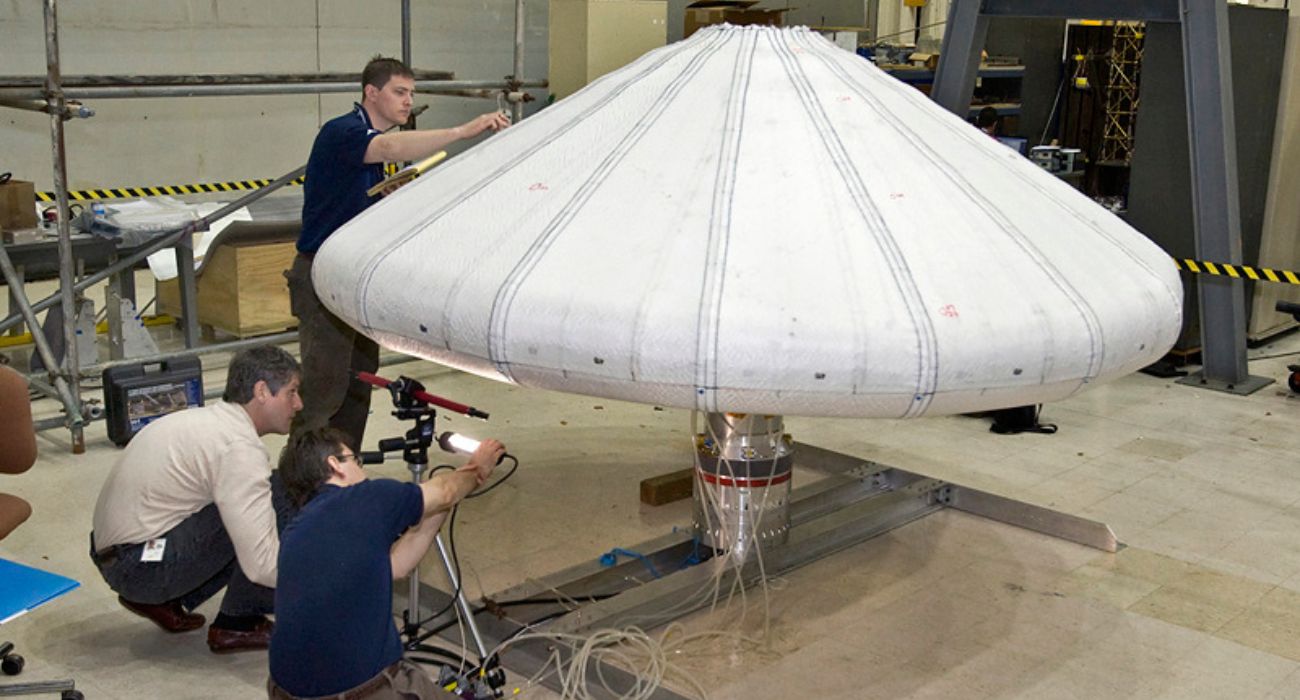NASA’s newest inflatable heatshield has passed its test in a journey to space and back. NASA hopes that this success will lead to putting larger vehicles on the surface of Mars.
NASA’s Low-Earth Orbit Flight Test of an Inflatable Decelerator, or LOFTID, is an aeroshell designed for reentry into celestial bodies with an atmosphere to reduce heat and friction. The device is essentially a saucer, 20 feet wide when inflated, made up of layers of fabric that can survive falling into the atmosphere at 18,000 miles per hour and temperatures close to 3,000 degrees Fahrenheit.
NASA said this technology will allow for a variety of proposed missions to celestial bodies like Mars, Venus, and Titan.
The heat shield represents one solution for landing on Mars due to its ultra-thin atmosphere. NASA determined that previous methods of surface landings, such as parachutes and its sky crane, were no longer effective solutions for landing on the surface of the red planet.
Although NASA has landed a series of robotic spacecraft on Mars, the current approaches only work for payloads weighing up to about 1.5 tons – about the size of a small car – which is inadequate for larger landers carrying 20 tons or more that are needed for the people and supplies required to survive on the red planet.
United Launch Alliance (ULA) and NASA dedicated the LOFTID mission to Bernard Kutter, manager of advanced programs at ULA, who passed away in August 2020. Kutter advocated for lower-cost access to space and technologies that would make access to space a reality.
The $93 million project launched in a United Launch Alliance Atlas V alongside a Joint Polar Satellite System-2 (JPSS-2) on November 10. After the launch, NASA confirmed on a livestream that LOFTID inflated at about 78 miles above Earth’s surface, marking the beginning of the re-entry. The craft landed in the Pacific Ocean, roughly 500 miles away from Hawaii and 5 miles away from the Kahana II recovery vessel.
“This is one of the most critical technologies that we’re establishing right now with this mission, and also with that first successful orbital flight and recovery,” said Jim Reuter, NASA‘s associate administrator for the space technology mission directorate, during the livestream after the craft landed.
“Everybody’s just relieved and excited,” Greg Swanson, the instrumentation lead for LOFTID, said during the broadcast. Swanson was on the recovery ship that was heading to pull the device out of the water.
Dr. Neil Cheatwood, a principal investigator for the LOFTID, said that the mission’s success means that the technology is now ready for use on future missions.
Manned missions to Mars remain a future endeavor while NASA focuses on its Artemis Program, an effort to place astronauts on the lunar surface and develop an ongoing presence there.






